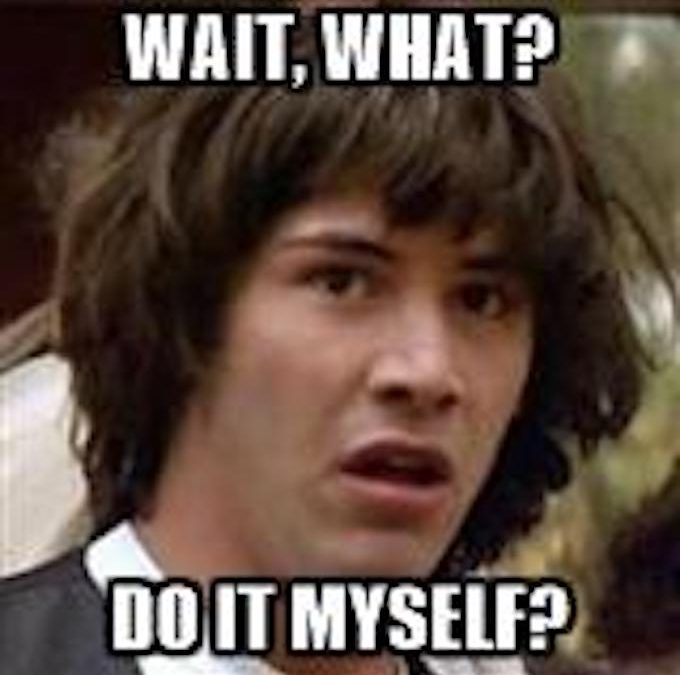Today, I’m going to give you the secret to getting free sales scripts forever. Here it is. Write them yourself. I know, #meancoach. If you want to be a great sales leader, become a student of sales. And really learn the stuff.
This podcast is here to help those of you who feel stuck and might post to our community, do you have a script for so and so situation? I’m sure that you are sitting there stumped with writer’s block and you are reaching out to help. However, our community and our coaching team are not helping you by writing this for you. I think coaching has a lot of parallels to parenting. If our child has a tough assignment, we don’t write the paper for them, we guide them through their own thought process and help them to make it work for themselves. Because they need to learn. You might be thinking there is no sense in recreating the wheel. Here is the problem with that thought process. You are a wheel maker. So you need to learn how to create wheels so you can make them as part of your roles. It also puts a disproportionate burden on those who have taken the time to develop this skill.
So today on the podcast I’m going to let you know, the Emerge coaches are no longer going to give you scripts, and I’m going to ask our community to do the same. We will refer you back to the structure of how to build it, and which set of components you should follow. If you would like help with an approach we definitely want to help you. Take the time to go through and make your best effort, and then we will be glad to give you some feedback and help you develop this skill.
4 guidelines to writing your own scripts.
- Identify which type of conversation it is. Are you setting an appointment? Are you in a sales conversation, even if you are selling an idea? Are you leaving a voicemail? Are you asking for referrals? Are you creating buy-in, which is a variation of a sales conversation? Each of these has specific components and steps which are found in your courses to give you the structure. Once you know the steps of the approach you are creating, you are off to a good start.
- Determine your call to action. What do you actually want them to do? Do you want them to set up an appointment with you? Do you want them to buy something? I know this is the last thing you are going to say in the actual approach but you always need to start with the end in mind.
- Write out the benefits from THEIR perspective. No one cares about what YOU want to do. They only care about what’s in it for them. Write out at least 3 benefits to get your brain going to think about things from their perspective. Make sure you use simple language. We recommend at the 4th-grade level. And use words they would use. When you are so engrained in your company culture, it’s likely you have your own language. Well, customers or team members don’t think in that language. When you are writing, use their words. An example of this is a coaching call I did with a group on explaining the benefits of a product. Customers don’t wake up and think, “I wish I had some anti-aging oil right now.” They wake up, look in the mirror and think, “hey, where did that wrinkle come from?” So the words you use should be, “this is great for that time where you wake up, look in the mirror and think, where did that come from?” Then the customer knows you “get them.”
- Write in a buffer to remove pressure. We call this acknowledging the awkward. Maybe you are calling out of the blue. Maybe you are worried that you are bothering them. Maybe you don’t want them to feel pressured. Well, say that! Start your script with a buffer that just acknowledges what is really going on. One example is, “Hi, I know I’m calling out of the blue.” Or another is, “I’m going to run something by you, feel free to say no if this is not something you want to do.” It’s really just putting the truth out there.
Let me walk you through one example: how to schedule a coaching call with a team member you haven’t coached in a while.
- This is an appointment setting conversation. So the components would be an agenda, timeframe, and temperature check.
- The call to action is to schedule an appointment with you.
- The primary benefits from their perspective would be that they would increase their confidence, get better results, and earn more money in less time.
- The buffer would be something like, “Hi, I know we haven’t been meeting on a regular basis.”
So now you can fill in the blanks and you have a format you can schedule any type of appointment with.
“Hi Poppy, I know we haven’t been meeting on a regular basis but I wanted to run something by you. I really want to do a better job helping you to increase your confidence and earn more money in less time. So what I’m doing right now is setting up coaching calls where we would go over your goals, and help you develop a skill that will help you to do better. The coaching call would take between 40-60 minutes. Is that something you would be open to?”
“Hi college roommate, gosh it’s been forever since we have spoken. I was hoping we can do a playdate with the kids so that we can finally get them to play together. I figured we could have lunch, the kids could play hide and seek and then just run around the backyard. I was thinking we could do something for just an hour or two since we are both busy but I miss you. What do you think?”
By us not building your scripts for you, now you have developed the skill set to be versatile and succeed in any situation. And now you have the ability to build your own sales scripts forever.
If you want to lead your team to help drive more sales and make more money, then join us June 17th at 8:00 am PDT! (This live call will be recorded and available lifetime to all registrants) We’re going to talk about how to run effective 1-on-1s where your team member: has clear goals, has buy-in to the solution you have made together, and actually does the stuff. It’s only $27 and is great for those of you new to Emerge and for those of you in our programs as well. Register at emergesalestraining.com/salesleadership.

